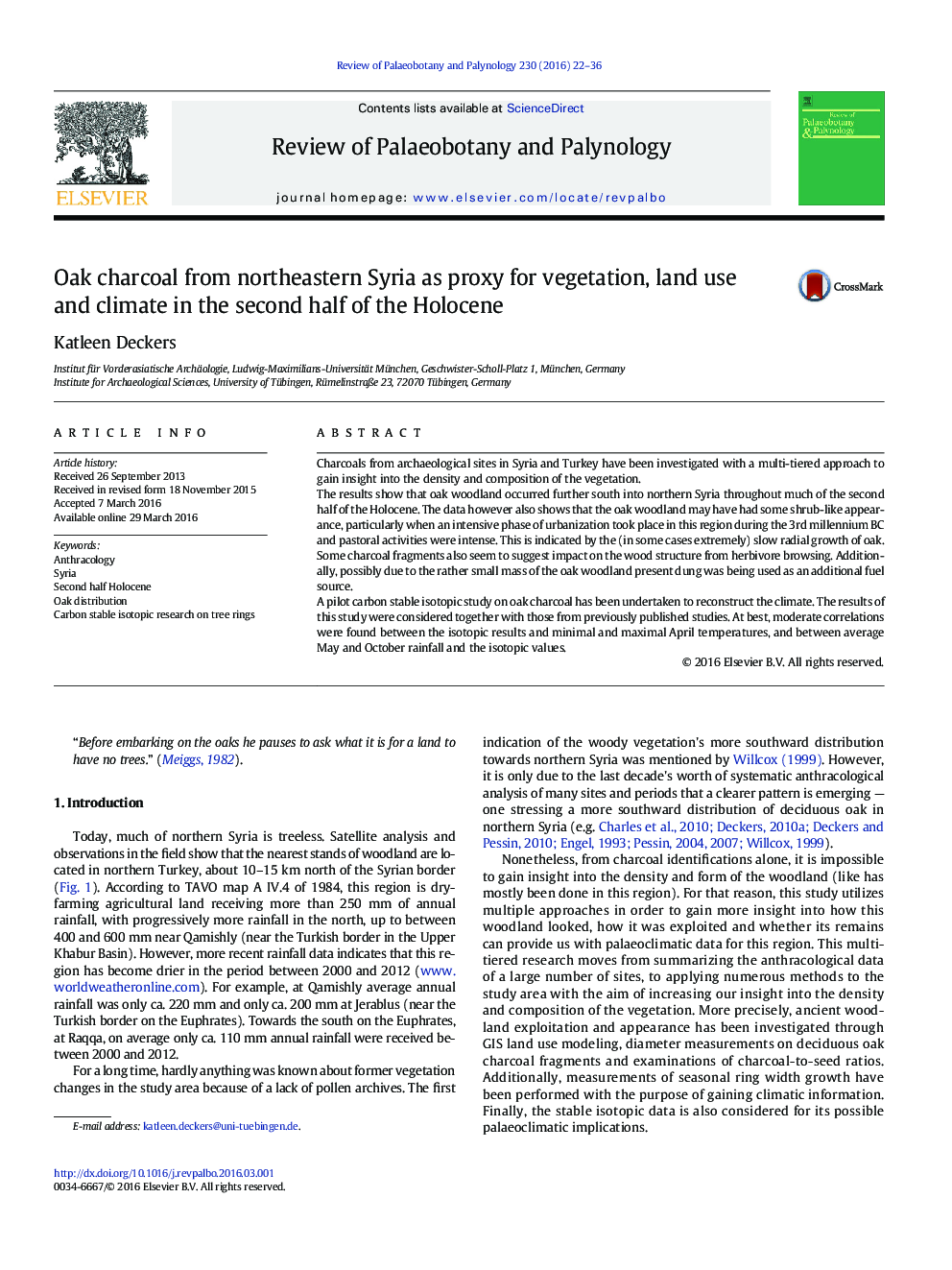| Article ID | Journal | Published Year | Pages | File Type |
|---|---|---|---|---|
| 4750071 | Review of Palaeobotany and Palynology | 2016 | 15 Pages |
•Oak park woodland occurred further south than today in second half Holocene.•Slow radial growth of oak → scrub-form•Dung as additional fuel → open vegetation•Strong anthropogenic impact on vegetation, especially by pastoral activities.•Stable C-isotopic results oak → moderate correlations with T and rainfall
Charcoals from archaeological sites in Syria and Turkey have been investigated with a multi-tiered approach to gain insight into the density and composition of the vegetation.The results show that oak woodland occurred further south into northern Syria throughout much of the second half of the Holocene. The data however also shows that the oak woodland may have had some shrub-like appearance, particularly when an intensive phase of urbanization took place in this region during the 3rd millennium BC and pastoral activities were intense. This is indicated by the (in some cases extremely) slow radial growth of oak. Some charcoal fragments also seem to suggest impact on the wood structure from herbivore browsing. Additionally, possibly due to the rather small mass of the oak woodland present dung was being used as an additional fuel source.A pilot carbon stable isotopic study on oak charcoal has been undertaken to reconstruct the climate. The results of this study were considered together with those from previously published studies. At best, moderate correlations were found between the isotopic results and minimal and maximal April temperatures, and between average May and October rainfall and the isotopic values.
